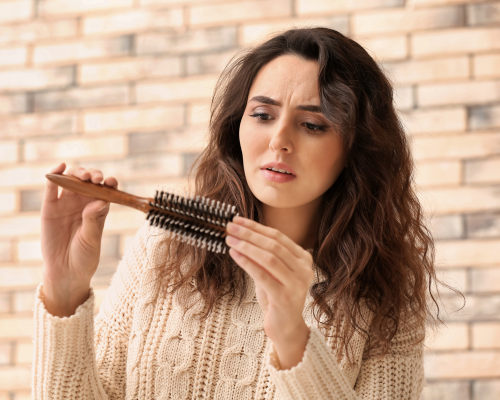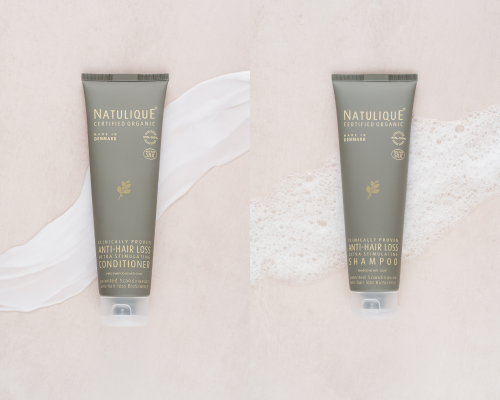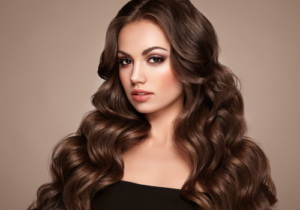"`html
Hair, a symbol of beauty and personality, is subjected to various chemical aggressions throughout its life. When it comes to hair transformations, coloring is at the forefront. However, some hair colors can accelerate hair loss. Let's take a look at the reasons behind this phenomenon and better understand the relationship between hair coloring and hair health.
Understanding hair loss
The different types of hair loss
Occasional hair loss
Occasional hair loss is often temporary and can be caused by environmental factors or seasonal changes. This form of hair loss is generally reversible and can be corrected with appropriate care.
Chronic hair loss
Chronic hair loss is a more persistent problem, often linked to endogenous factors such as genetics or hormonal imbalances. It often requires a more dedicated intervention to be effectively managed.
The main causes of hair loss
Genetic factors
Genetics play a crucial role in hair health. An inherited predisposition to baldness, known as androgenetic alopecia, can intensify hair loss over time.
Hormonal changes
Hormonal fluctuations, such as those caused by menopause, pregnancy or thyroid disorders, can also disrupt the hair growth cycle, leading to significant hair loss.
Stress and diet
Chronic stress and an unbalanced diet deprive hair follicles of essential nutrients, weakening hair and increasing its tendency to fall out.
A thorough understanding of these causes is essential to effectively address both the prevention and treatment of hair loss, especially when considering chemical treatments such as coloring. Let's continue our exploration to understand exactly how the chemicals in hair coloring can influence hair health.
“`

"`html
The effects of hair color chemicals
Hair color composition
Potentially harmful ingredients
Hair colorants often contain powerful chemical ingredients such as ammonia, peroxides and parabens. Ammonia, for example, is used to open the hair cuticle to allow color pigments to penetrate. However, this alkaline agent is known for its potential to weaken hair structure, making it more susceptible to breakage and loss. In addition, hydrogen peroxide, although effective in oxidizing natural pigments and replacing them with artificial ones, can lead to significant drying out of the hair and alter its elasticity.
Risks associated with chemical products
Prolonged, intensive use of chemical colorants can have a number of undesirable consequences. The damage caused by these products includes not only aesthetic alteration, but also effects on the health of the hair itself. Risks include allergic reactions of the scalp, such as itching, redness and even burning in extreme cases. The weakening of hair fibers can also lead to a reduction in hair diameter, accentuating the appearance of thinning hair.
How do chemicals affect hair?
Alteration of capillary structure
The specificity of coloring chemicals lies in their ability to alter the hair's natural structure. This alteration delivers temporary color results, but weakens the hair fiber at the same time. This is due to the breakdown of the disulfide bonds responsible for hair's strength and resilience. As a result, hair becomes more susceptible to breakage, notably due to the cumulative effect of various exposures to these products.
Scalp irritations and allergies
The chemicals in hair dyes can also irritate and sensitize the scalp. Some people develop hypersensitivity to dye components, manifesting symptoms such as redness, tingling or even mild swelling of the scalp. In addition, repeated reactions can destabilize the natural environment of the hair follicle, leading to more noticeable shedding of hair, seemingly intensifying hair loss in some users.
It's crucial to approach hair coloring with a degree of caution. Making sure you understand the products you're using and choosing gentler alternatives could reduce these negative effects while preserving hair health and vitality in the long term. Solutions do exist to effectively protect the scalp from aggressive impacts and thus avoid a progressive deterioration in hair quality.
“`
See also: Can I have my hair colored while I'm pregnant?
The impact of hair coloring on hair health
Hair coloring and hair loss
Scientific studies and research
Numerous studies have been carried out to assess the impact of hair coloring on hair health, particularly with regard to hair loss. Researchers agree that the aggressive chemical ingredients present in these products can weaken the hair root. A study published in a dermatological journal showed that excessive use of chemicals, including ammonia and peroxides, can lead to progressive degradation of hair structure. It's important to note that some research has revealed that colorings containing fewer harmful substances reduce the rate of hair loss compared with conventional chemical dyes.
Testimonials and case studies
Beyond scientific research, testimonials from people who have used hair coloring also reveal their experiences of hair loss. Many users have reported a perceptible increase in hair loss after repeated use of aggressive dyes. For example, people with initially thick, healthy hair have observed a significant decrease in hair density and shine. However, it is essential to mention that some people experience no problems at all, suggesting a diversity of reactions depending on hair type and frequency of chemical use.
How to minimize damage?
Choose less aggressive products
To reduce the negative impact of coloring on hair health, it's essential to choose less aggressive products. Opting for ammonia- and paraben-free colorants that use natural oils and moisturizing ingredients can help preserve hair structure. Natural plant dyes, such as henna, are popular alternatives that can also reduce the risk of hair loss. It's crucial to read product labels carefully to ensure they contain as few stripping chemicals as possible.
Appropriate care before and after coloring
Hair care before and after coloring plays a key role in minimizing damage. Before coloring, we recommend moisturizing hair with nourishing masks to strengthen the natural lipid barrier. After coloring, regular application of conditioning and repairing care products is crucial. This includes the use of gentle shampoos and conditioners specially designed for color-treated hair, which help maintain moisture while restoring the strength of hair fibers.
In addition, it's a good idea to respect a suitable interval between coloring applications to allow hair to regenerate and thus reduce chemical saturation. Finally, avoiding excessive use of heating appliances can also help preserve hair quality after coloring.
By implementing these strategies, you can continue to enjoy the aesthetic benefits of coloring while protecting your hair's long-term health. Hair color doesn't have to be synonymous with hair loss, as long as informed choices are made when purchasing and applying products.
Care practices and precautions to preserve your hair
Adopt a rigorous skincare routine
Hydration and nutrition
To offset the drying effects of coloring, it's essential to incorporate moisturizing and nourishing treatments into your hair routine. Regularly use masks rich in natural oils such as argan oil, jojoba oil or shea butter to restore moisture and strengthen the hair fiber. In addition, protective serums and hair oils can be applied after washing to seal in moisture.
Heat protection
Excessive heat from appliances such as hair dryers, straightening irons or curling irons can aggravate damage caused by coloring. It's crucial to use a thermal protector whenever you apply heat to your hair. This helps to reduce the risk of breakage and maintain the hair's softness and shine.
Professional advice and product selection
Consult a dermatologist or hairdresser
For those who notice increased hair loss after coloring, it may be beneficial to consult a dermatologist or specialized hairdresser. These professionals can assess the health of the scalp and hair, and recommend suitable treatments. Professional advice can also point the way to less invasive coloring techniques and high-quality products formulated to minimize hair stress.
Raising awareness of product labels
When choosing hair coloring products, it's crucial to understand the list of ingredients. Avoid dyes containing aggressive substances such as ammonia, resorcinol or high-concentration peroxides. Formulations based on natural or certified organic ingredients are often gentler on the hair, while still delivering beautiful color.
FAQ section
Do ammonia-free colorants prevent hair loss?
Ammonia-free colorants are often less aggressive because they don't open the cuticle as widely, thus reducing hair stress. However, while they can reduce damage, they don't completely prevent hair loss, especially if other factors are involved.
How often should I space out my coloring to reduce hair loss?
It's generally advisable to wait at least six to eight weeks between colorings to allow hair to regenerate. This helps avoid excessive chemical build-up, which can exacerbate damage and hair loss.
Can vegetable dyes prevent hair loss?
Vegetable dyes, such as henna, are often gentler on hair because they don't penetrate deep into the hair fiber. As well as reducing the risk of hair loss associated with chemical coloring, they can also improve overall hair health when properly formulated.
Is the use of natural products sufficient to prevent damage?
Although the use of natural products can reduce the aggressive effects of chemical coloring, it must be complemented by appropriate hair care and regular maintenance to ensure healthy hair.
Are specific shampoos for colored hair effective?
Shampoos for color-treated hair are formulated to protect color and hair health. By retaining moisture and adding specific nutrients, they can prolong color vitality and prevent rapid degradation of the hair fiber, reducing the risk of hair loss.
By adopting these care practices and taking precautions before and after coloring, it's possible to maintain beautiful hair while minimizing the potential negative effects of these aesthetic transformations. With an informed and responsible approach, coloring can be carried out safely and with less impact on your hair's health.




